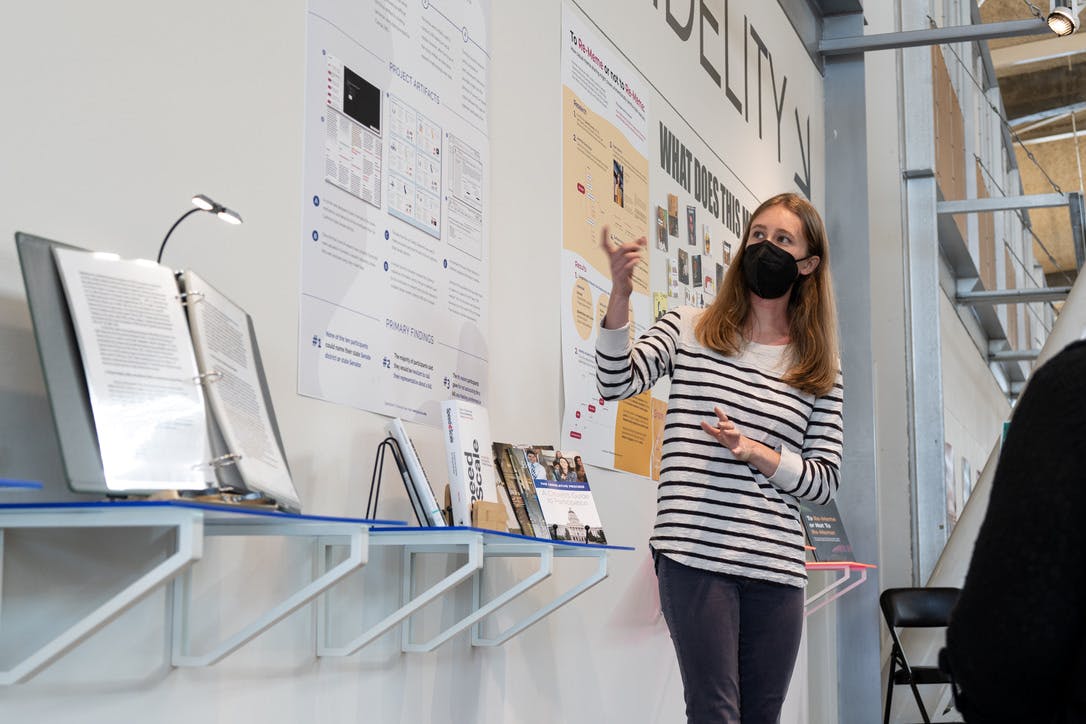Skip to content
 Barriers to Passing Environmental Legislation at the California State Level:
Barriers to Passing Environmental Legislation at the California State Level:
Oily Democrats and the Young Voter’s Perspective
Overview
Climate crisis, meet UX Research: this research study investigates California's environmental legislation roadblocks and the struggle to engage young voters in environmental action. The findings? Zero participants could name their State Senator, and pro-environmental social media posts may be alienating rather than appealing to Generation Z. The proposed solution? Reimagine simple interactions and communication strategies. By speaking their language, redesigning interfaces, and leveraging existing connections, this study proposes that addressing the climate crisis depends on a UX-centric approach.
Role: This was a solo thesis – all roles were completed by me, Emily.
Duration: October 2021 – April 2022
Methodologies: Primary (surveys, semi-structured interviews) and secondary research (literature reviews, data analysis).
Where did it start?
This research report, serving as my thesis, was completed in partial fulfillment of the Bachelor of Fine Arts degree in 2022. As a senior in the Interaction Design program at California College of the Arts, I became the first student to petition the school for permission to research and write a traditional, written research paper instead of developing an interactive “senior thesis project.”


My thesis, in a nutshell, is presented below (because who wants to read 10,000 words?) If you’d like to read the flipbook, take a look
. Please reach out to me directly at if you would like a copy of the thesis.What type of research did I do?


Preliminary research started with phone calls to CA-based State Senate offices & environmental organizations.
I then attempted a survey, but recruiting proved too difficult given the limited budget. As a result, the focus shifted to creating personas using data provided by Claritas 360 Zip Code Look-up.
Personas were initially used to conduct A/B testing on social media; however, after the focus of the study shifted, an alternative research methodology was employed.
The final round of research, consisting of semi-structured interviews, provided insight into the behavior of young CA-based voters between the ages of eighteen and twenty-five. As we often say in research, there is no better way to get to get to the bottom of our “why?” questions than to conduct qualitative research.
Dig into each method below:



Participants were asked about their knowledge of the California State Senate, the purpose of a State Senate bill, their involvement in previous advocacy work, and their awareness of environmental issues and organizations in California.
Once the interviews were completed, transcripts were uploaded to , a research repository, where they were analyzed using color-coded tags. The interviews resulted in the following primary findings.
What were the end results?
First, none of the ten participants could name their State Senate district or State Senator. When asked to name their State Senate district or State Senator, students responded with, “I don’t know,” or “That’s a great question!”
Second, the majority of students said they would be hesitant to call their representative about a bill.
Third, the most common reason students gave for not advocating for a bill was feeling uninformed or misinformed.
What did I learn?
There are a handful of Democratic California State Senators, labeled "Oily Democrats" by environmental groups, who are lobbied by the oil & gas industry, trade unions, and other organizations. It's these State Senators who act as a barrier to environmental progress in the California State Senate.
When it comes to engaging young voters with State Senate bills, there is a lot that needs to change. First and foremost, information about State Senate bills needs to be made more accessible – young voters would rather educate themselves than be fed a predigested summary.
The information needs to be communicated using language that resonates with the group it is trying to influence. When asked about examples of climate messaging that stood out the participants, references were made to TikTok and Instagram, not campaign emails and flyers.
Finally, I learned that the question which originally sparked my research ("Why is it so difficult to pass climate policy in California?") cannot possibly be tackled in a single thesis paper. I hope this research inspires others to continue to ask questions like this one, whether it be in an academic setting or in the workplace.
What happened after I submitted my thesis?
I presented the findings, of course! Once I had submitted my thesis to my professor, Aynne, I presented my work in front of my graduating class, my professors, and the head of our program, .



Want to print your doc?
This is not the way.
This is not the way.

Try clicking the ⋯ next to your doc name or using a keyboard shortcut (
CtrlP
) instead.